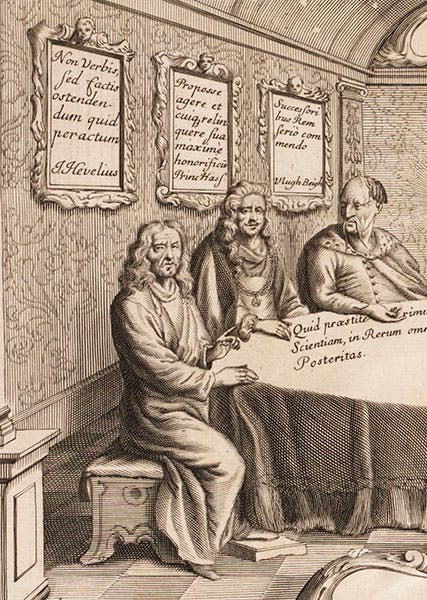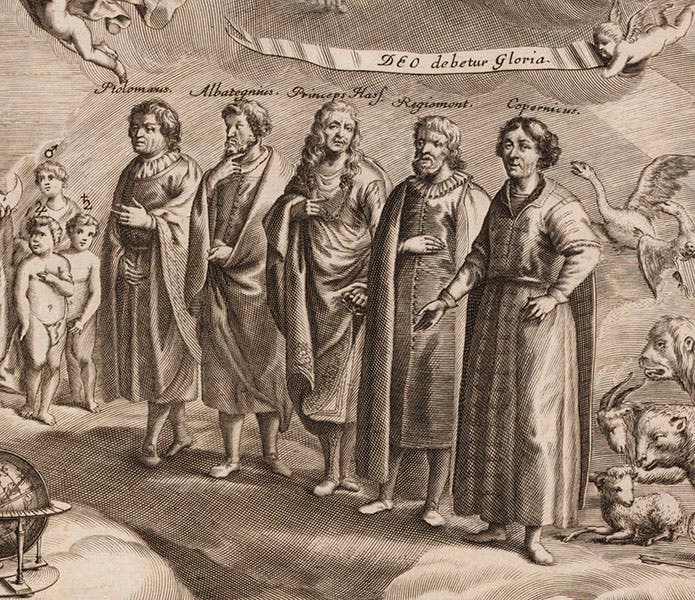Scientist of the Day - Wilhelm IV, Landgrave of Hesse-Cassel
Wilhelm IV, the Landgrave of Hesse-Cassel, was born June 24, 1532. He inherited his Landraviate in 1567 and promptly set up an astronomical observatory at his court at Cassel (now Kassel), importing a great astronomer, Christoph Rothmann, as well as a gifted instrument-maker, Jost Bürgi. Wilhelm IV is a good example of the enlightened scientific patron, without which the sciences would have been hard-pressed to survive, much less flourish, in the centuries before the rise of scientific societies and supportive universities.
Hesse-Cassel was carved out of the Landgraviate of Hesse when Philip I, Wilhelm's father, died, and left quadrants to each of his four sons. Hesse-Cassel was the northernmost part, some ways northeast of Frankfurt and Mainz, in east-central Germany, with Cassel as the capital. Wilhelm IV's observatory was one of the two great observatories in late sixteenth-century Europe, the other being that of Tycho Brahe, another enlightened patron of scientists, in this case, himself and his assistants.
Rothmann compiled a complete star catalog at Cassel, and a century later, when Johannes Hevelius published his own catalog of the stars, the Prodromus astronomiae, he compared his star positions with those of a few other selected observers; they included Ptolemy, Ulugh Begh, Tycho Brahe, and "Princ. Hass.", i.e, Wilhelm IV. On the frontispiece to the Prodromus, he featured six star cataloguers, and included Wilhelm IV, between Hevelius and Ulugh Beg (see detail, third image). For the complete frontispiece, click here.
Hevelius also designed a frontispiece to his star atlas, the Firmamentum, usually bound with the catalog, and this pays homage to 10 stellar observers (plus Hevelius). Wilhelm IV is the center of the five on the right (“Princeps Hass.”), right next to Regiomontanus and once removed from Copernicus (see detail, fourth image). If you would like to see the entire frontispiece, which includes Hevelius dedicating his new constellations to Urania, click here.
On the technological front, Bürgi's celestial spheres and astronomical clocks were highly prized as the most accurate instruments available; many are still on display in various European museums. We see here an armillary sphere/clock that Bürgi constructed in Cassel in 1585 for Wilhelm IV; it was looted during the Thirty-Years War and is now in Stockholm (fifth image). When we featured Bürgi as Scientist of the Day last year, we began our slide show with this instrument.
In his Atlas coelestis of 1742, Johann Doppelmayr paid tribute to 8 great astronomical observatories, sketches of which he placed in the four corners of two celestial planispheres. Cassel was one of those eight honored (see detail, sixth image; for the complete plate, click here).
Interestingly, Doppelmayr’s view of the Cassel observatory is dated 1714 and credits the current prince Charles as patron of the observatory, indicating that Wilhelm IV, back in 1580, planted seeds that grew very deep roots.
Dr. William B. Ashworth, Jr., Consultant for the History of Science, Linda Hall Library and Associate Professor, Department of History, University of Missouri-Kansas City. Comments or corrections are welcome; please direct to ashworthw@umkc.edu.










